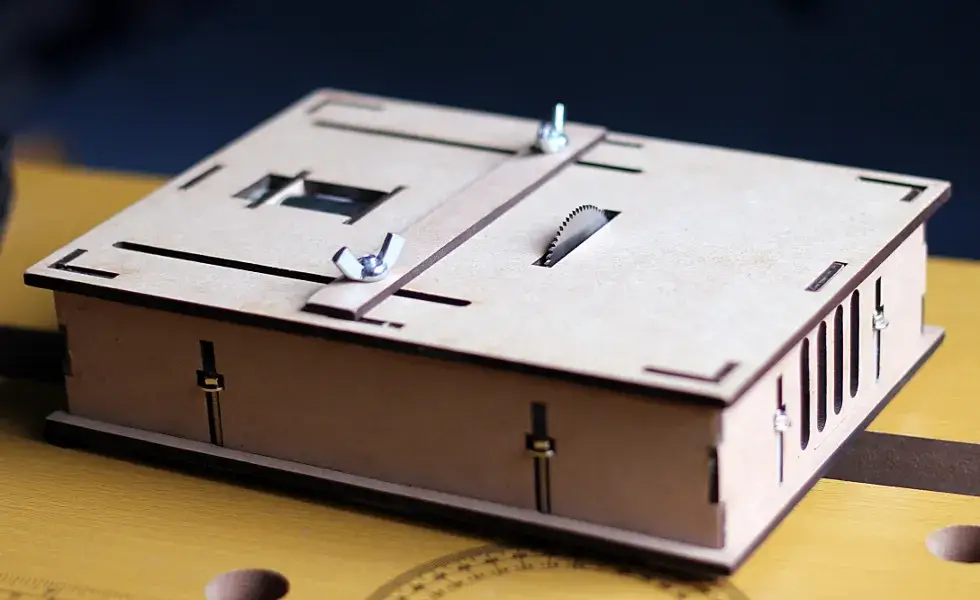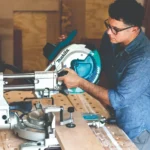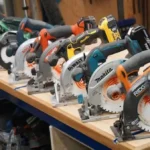A table saw is a versatile and powerful tool that can be used for various woodworking projects. Whether you want to make furniture, cabinets, shelves, or other items, a table saw can help you cut wood with precision and speed. But how do you choose a good table saw for your DIY needs? What features and factors should you consider before buying one? In this article, we will answer these questions and provide some tips on how to find the best table saw for your home workshop.
A good DIY table saw is one that meets your budget, space, and project requirements. It should have a sturdy and stable base, a smooth and flat table top, a reliable and accurate fence, a powerful and durable motor, and a safe and easy-to-use blade guard. Additionally, it should have some extra features and accessories that can enhance its performance and versatility, such as a miter gauge, a rip fence, a dust collection system, and a stand.
Budget
One of the first things you need to consider when buying a table saw is your budget. Table saws can range from a few hundred to several thousand dollars, depending on their size, quality, and features. Generally, the more expensive the table saw, the better its performance and durability. However, that does not mean you have to spend a fortune to get a good table saw. You can find some decent models that are affordable and suitable for your DIY needs. The key is to balance your budget with your expectations and needs.
Space
Another important factor to consider is the space you have available for your table saw. Table saws come in different sizes and shapes, and they can take up a lot of room in your workshop. You need to measure your space and make sure you have enough clearance for the table saw and its accessories, as well as for the wood you will be cutting. You also need to consider the portability and storage of your table saw. If you have a limited space or you need to move your table saw around, you might want to opt for a compact and lightweight model that has a foldable or detachable stand. On the other hand, if you have a spacious and permanent workshop, you might prefer a larger and heavier model that has a fixed and sturdy base.
Project Requirements
The third factor to consider is your project requirements. What kind of woodworking projects do you plan to do with your table saw? What kind of wood do you want to cut? How thick, wide, and long are the boards you will be working with? These questions will help you determine the type and size of the table saw you need. There are four main types of table saws: benchtop, contractor, hybrid, and cabinet. Each type has its own advantages and disadvantages, and they are designed for different purposes and users.
- Benchtop table saws are the smallest and lightest models, and they are ideal for hobbyists and beginners who need a portable and affordable table saw. They are easy to set up and use, and they can handle small to medium-sized projects. However, they have limited power and accuracy, and they are not very stable or durable.
- Contractor table saws are larger and heavier than benchtop models, and they are designed for professional contractors who need a reliable and versatile table saw. They have more power and accuracy, and they can handle larger and thicker boards. However, they are more expensive and noisy, and they require more maintenance and calibration.
- Hybrid table saws are a combination of contractor and cabinet models, and they are suitable for intermediate and advanced users who want a high-performance and high-quality table saw. They have a powerful and enclosed motor, a smooth and flat table top, and a precise and sturdy fence. However, they are also more expensive and bulky, and they might not fit in small spaces.
- Cabinet table saws are the largest and heaviest models, and they are the best option for professional woodworkers who need a top-notch and durable table saw. They have the most power and accuracy, and they can handle any kind of project and wood. However, they are also the most expensive and complex, and they require a lot of space and electricity.
Features and Accessories
The last factor to consider is the features and accessories that come with your table saw. These can make a big difference in the performance and functionality of your table saw, and they can help you achieve better results and enjoy your woodworking experience. Some of the most important features and accessories to look for are:
- A fence is a guide that runs parallel to the blade and helps you make straight and accurate cuts. A good fence should be easy to adjust and lock, and it should be aligned with the blade and the miter slot. A rip fence is a type of fence that helps you make rip cuts, which are cuts along the grain of the wood. A miter fence is a type of fence that helps you make crosscuts, which are cuts across the grain of the wood.
- A miter gauge is a device that fits into the miter slot and helps you make angled cuts. A good miter gauge should be easy to read and set, and it should have positive stops at common angles, such as 45 and 90 degrees. A miter gauge can also be used with a sled, which is a platform that slides along the miter slot and holds the wood in place.
- A blade guard is a cover that protects the blade and prevents your fingers from coming into contact with it. A good blade guard should be clear and transparent, so you can see the blade and the cut line. It should also be easy to remove and install, and it should not interfere with the operation of the table saw. Some blade guards also have a splitter, which is a metal piece that prevents the wood from pinching the blade and causing kickback, and anti-kickback pawls, which are teeth-like projections that grab the wood and prevent it from flying back at you.
- A dust collection system is a feature that collects the dust and debris that are produced by the table saw. A good dust collection system should have a large and powerful fan, a hose that connects to the blade guard and the base of the table saw, and a bag or a bin that collects the dust. A dust collection system can help you keep your workshop clean and healthy, and it can also improve the visibility and quality of your cuts.
- A stand is a support that holds the table saw and provides stability and mobility. A good stand should be strong and stable, and it should have adjustable legs or feet that can level the table saw on uneven surfaces. It should also have wheels or casters that can help you move the table saw around. Some stands are foldable or detachable, which can save space and make storage easier.
Conclusion
A table saw is a great tool for any DIY enthusiast who loves woodworking. However, choosing a good table saw can be challenging, as there are many factors and features to consider. In this article, we have discussed some of the most important aspects that can help you find the best table saw for your needs and preferences. We hope this article has been helpful and informative, and we wish you happy and safe woodworking!




